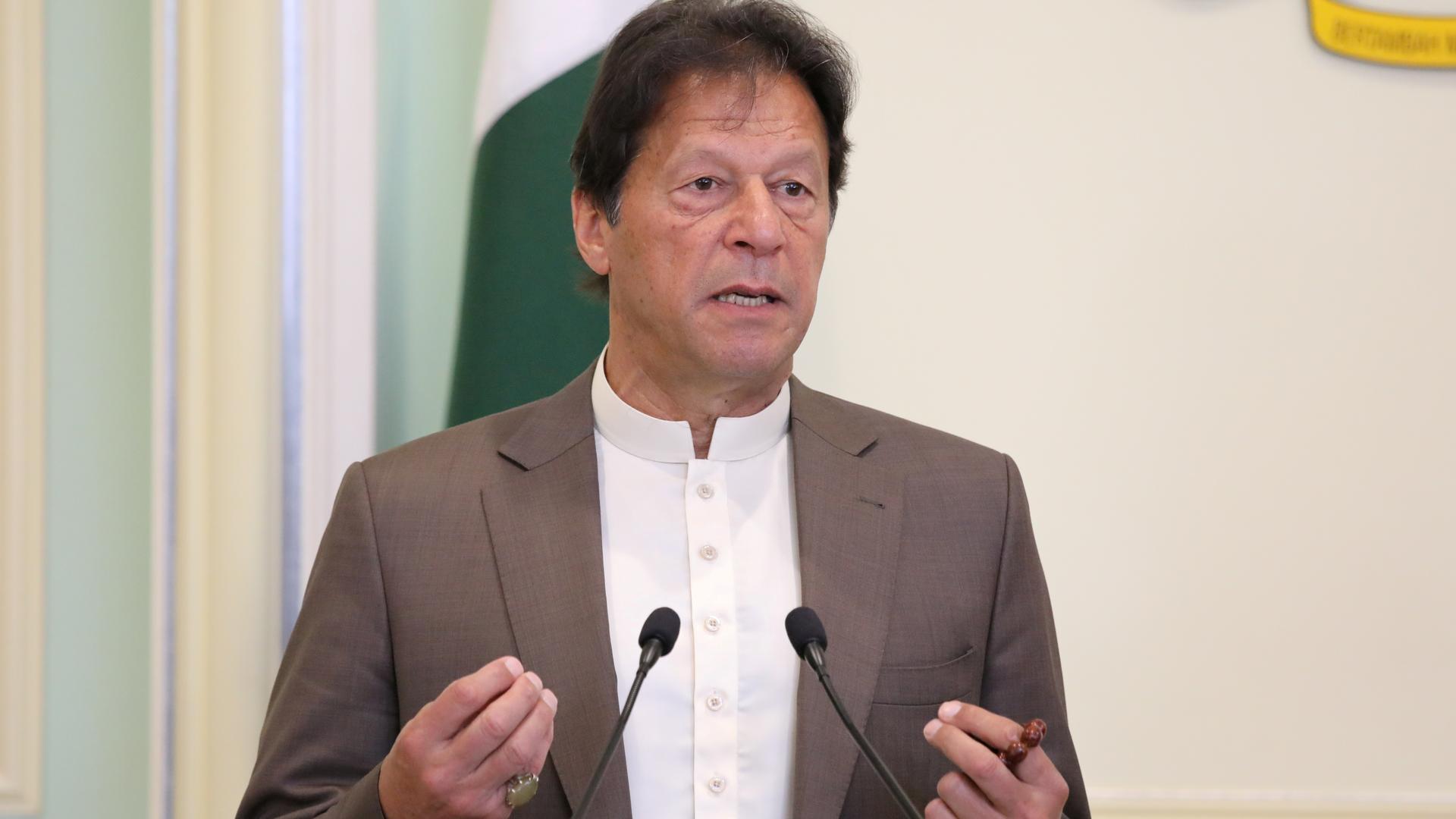Prime Minister Imran Khan is right to be afraid of economic devastation, but sweeping the healthcare emergency under the rug won’t fix it.
Two months after recording its first Covid-19 infections, Pakistan stands on the precipice of a mass outbreak that threatens to double its poverty rate and spark social unrest if not properly managed.
The failure of piecemeal efforts to curb its spread, reflected by the rapidly accelerating number of infections (over 13,000 on Sunday night) identified by increased targeted testing, points to an ominous first peak sometime between mid-May and mid-June, according to various federal and provincial ministers.
Unless the government yields to pressure from the medical community to impose a total lockdown, the World Health Organisation has predicted more than 200,000 infections in Pakistan by July. At current morbidity rates, this would translate into about 4,000 fatalities.
Behind closed doors, however, the government has concluded that Pakistan’s pandemic could continue to spread at least until October, according to top officials who have confided in me.
From the onset, however, Prime Minister Imran Khan has remained staunchly opposed to a national lockdown because most Pakistani families depend on daily-wage incomes to survive. He argues that millions would be vulnerable to starvation if confined to their homes for a prolonged period, and would become increasingly likely to riot if unable to make a living.
Such “informal sector” workers comprise about 72 per cent of the national workforce of 65 million – or more than 47 million people. Considering that each average Pakistani household comprises more than six members, mass unemployment triggered by a nationwide shutdown would certainly have grave repercussions.
The prime minister has accused lockdown proponents of being elitist and is determined to reopen as much of the economy as quickly as possible.
The annual wheat harvest has started more or less on schedule, along with the reaping of seasonal produce, assuring national food security at a time of great trade disruption.
The construction sector, because of its inherent ability to quickly absorb labour and materials from associated industries, has been spurred into action by tax sops. Pakistan’s narrow range of export-oriented industries, led by textiles, are also partially reopened for business.
To its credit, Khan’s administration has acted promptly to soften the impact of the initial lockdown imposed earlier this month. It is in the process of distributing one-off cash payments sufficient to pay for a month’s worth of food to millions of families making up the poorest one-third of Pakistan’s 208 million population.
Pakistan’s government has also been quick to initiate contact with its creditors to obtain the support needed to maintain the stability of its macroeconomy.
The International Monetary Fund, World Bank and Asian Development Bank have all agreed to ramp up funding to pay for the emergency healthcare spending programme in Pakistan, and substantially boost funding.
Alongside the anticipated rescheduling of some of Pakistan’s international debt repayments by G-20 lenders, these injections will buy both time and fiscal space for it to absorb the impact of a probable two-year economic recession, the worst in its 73-year history.
At first, the pressure on Pakistan’s external finances will be relentless. The government is worried it could lose half of its export receipts over the next two months to the global pandemic.
Remittances by overseas Pakistanis are also expected to slide drastically, exacerbated by the loss of tens of thousands of jobs in the oil-dependent Gulf Arab economies, hitting dependent households across the country. With capital fleeing to relative safe havens, foreign direct investment will also be negligible until the global economy stabilises.
This all explains Khan’s focus on the economy. It does not, however, justify the Pakistani state’s negligent management of the public healthcare emergency.
Two months into the coronavirus outbreak, the federal and provincial governments have failed to reach a consensus on how to respond. In large part, that is because the response is being led by politicians, army generals and civil servants, not public healthcare experts.
This has resulted in a heated partisan debate amplified by a national media notoriously bereft of common sense. The recent relaxation of a two-week lockdown in different parts of the country was reported as “good news” prompting most Pakistanis to throw caution to the wind and treat it as a resumption of ordinary life.
Ignoring edicts issued by prominent Muslim scholars around the world, Pakistan’s populist clergy has deepened the public’s confusion by agitating for the reopening of mosques for congregational prayers in Ramadan.
Prime Minister Khan has said this reflects the unique thinking of an independent democratic state. If that is the case, then the people of Pakistanis have become psychologically immune to the threat of the disease, while remaining as vulnerable as ever to becoming infected.
The acceptance of the populist clergy’s demands is one of several dangerous trade-offs that, by default if not design, is leading Pakistan down the unproven path of “herd immunity”.
The true measure of Pakistan’s response lies in its hospitals, where frontline healthcare providers are waging a war of attrition. Many still lack the appropriate personal protective equipment, while units dedicated to treating the infected are woefully short of ventilators and fast filling to capacity.
It will soon become apparent whether the government got its priorities right or not.
Author: Tom Hussain
Tom Hussain is a journalist and analyst on Pakistan affairs and geopolitics in South Asia.
Source










Discussion about this post